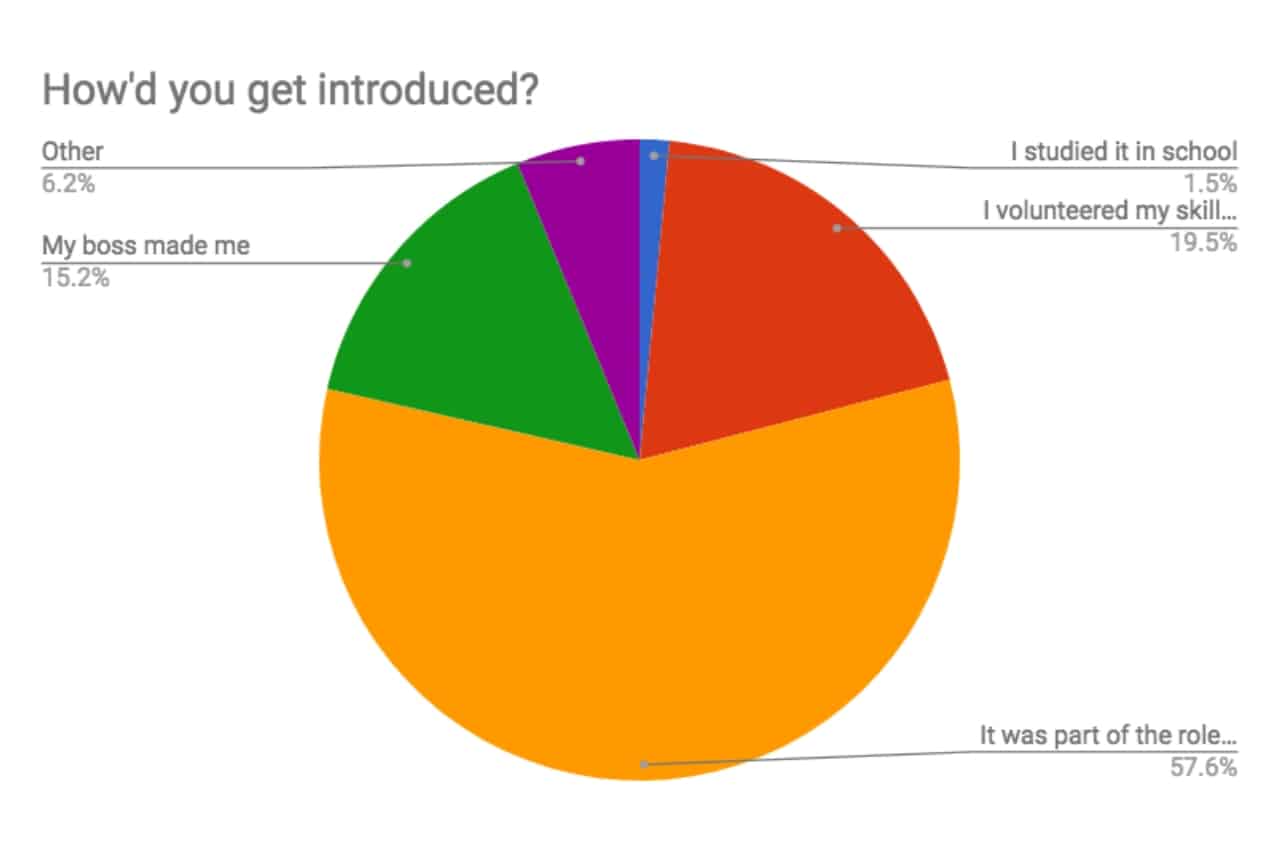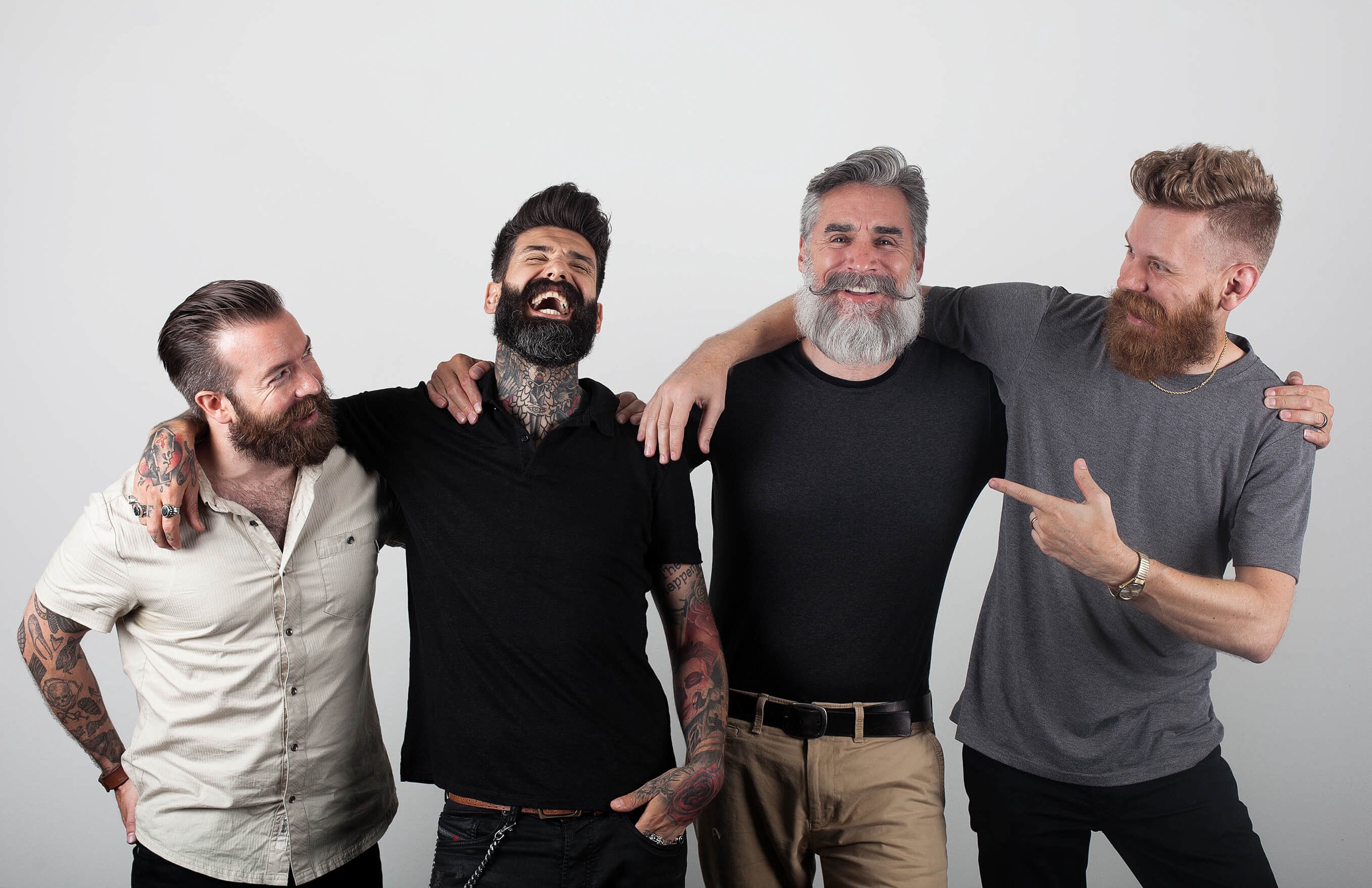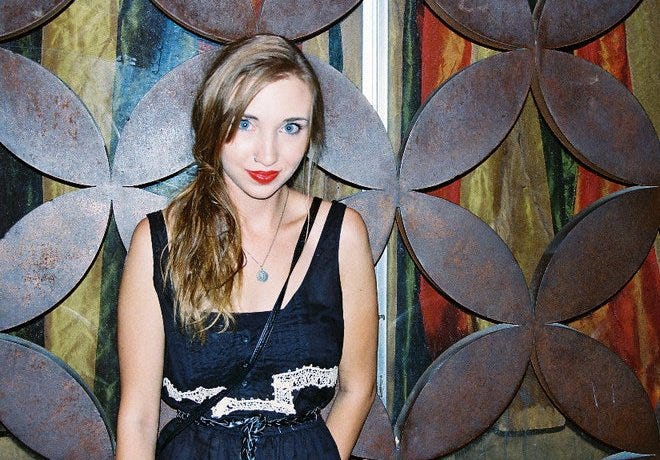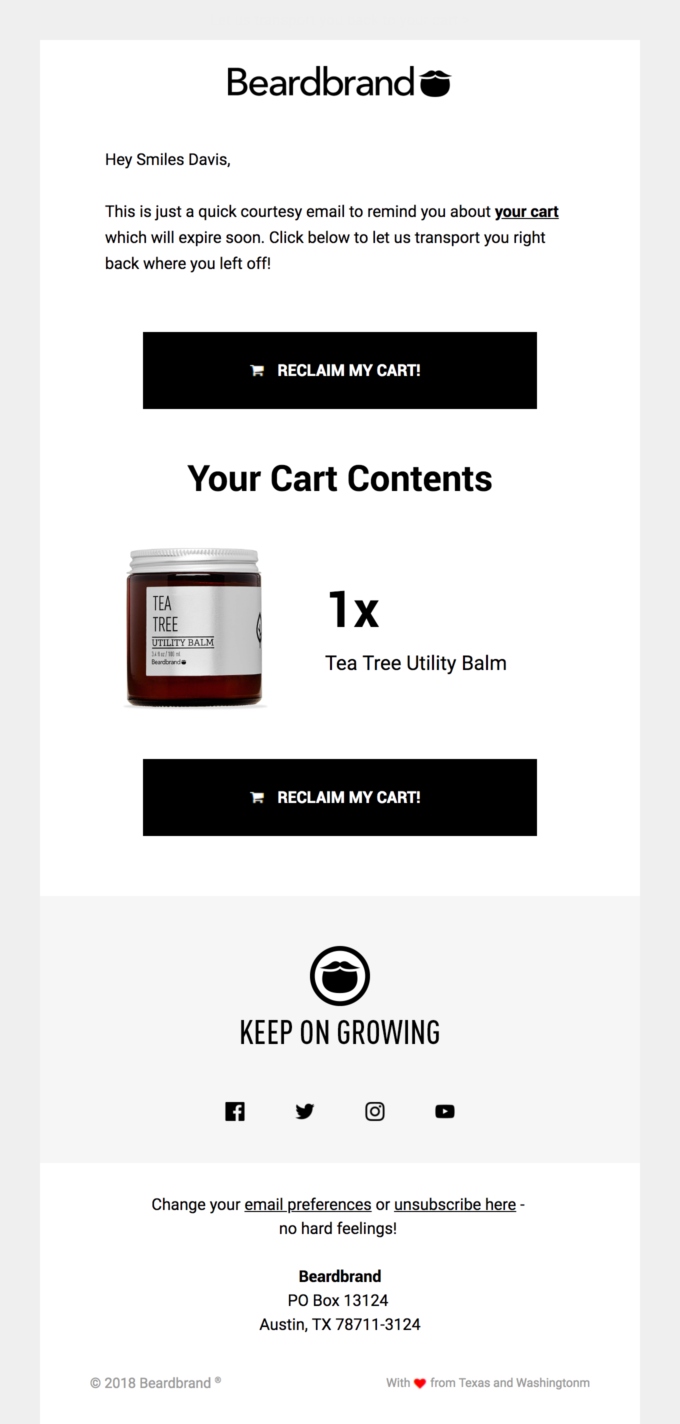
2018 Email Industry Conditions
Wondering what is going on in Email? We surveyed thousands of people in email to get their outlook, skills, teams, history, and strategies.
July 10th, 2018
An interview with Jenny Durre, Beardbrand’s Digital Coordinator, on how email flows help brands stay relevant and introduce new products to customers

Whether or not you’re gifted with luxurious facial locks, Beardbrand still has something to offer. That might mean their utility balm (supporting super-soft skin for both ladies and gents!), or, in the context of this article, learning more about how they built some killer email flows.
As we all know, the benefit of a triggered campaign is that once you get a beautiful one built, you can move on to bigger and more exasperating things. Since Beardbrand has done some great work constructing effective email flows, we’re excited to share the lessons they learned and some strategies you might want to replicate.

Jenny Durre, Beardbrand’s Digital Coordinator
It really sets the tone from the very beginning that”we’re here to teach you, we’re not here to sell you.” That’s a huge part of our company voice. The Bootcamp flow is full of helpful content about introducing somebody to our company, helpful tips to get started, and then going from there. Introducing them to our YouTube personalities, but also us as a team and our social media. It’s been performing very well for us, longer than we expected.
We have a great post-purchase flow. The first email is transactional: the order confirmation email. Then there’s 11 that go after that, but it’s dependent upon what they buy.
The second email after the confirmation is a thank-you.
Then, after that, it breaks up into a series of number-three emails. If they ordered mustache wax, and they haven’t ever received that email before, then they’ll get that. If they have received a mustache wax email, then it will go forward based on another product they may have purchased. The flow is just trying to help share more information — so giving them a video on how to use what they bought, and trying to time it right. They get that email five to seven days after purchasing. So, hopefully they’ve gotten their product, but if they haven’t, then the email is right around the time they should be getting it.
Even if they’ve received all these other emails, then we have one that talks about, just in general, where to find help.
Then we send them one much later that talks about social media and how they can follow more of our community.
Then at six months we do like a,”Hey, you probably need to restock by now, if you’ve been using it.”
We actually make quite a bit of money from the order confirmation email itself, which cracks me up all the time. It’s not as high an open rate as you would expect (like 64%) because it’s transactional. But, in the past 30 days it’s made us like $4,000.

Subject Line: “Oh Yeah! Your Beardbrand Order #6500065 is confirmed”
In it, we highlight other things they might like, but, really, the post-purchase kind of does its own job, and helps us boost our customer service, and at least gives people a way to find a resource themselves if they are unable to reach out right away. In terms of which ones convert well, it depends on the past 30 days. Sometimes one will do well, depending on what people bought.
But our top-performing flows are almost always abandoned cart, because that’s something that people were already interested in and it’s easy to share more details and convince them that it’s a good thing.
We’ve personalized the abandoned cart a little bit more. Something that’s helped us is doing the text-based email, and I worked with a customer service team to write some really genuine emails.
The first one is a “Can I help you” email, and it comes from our customer service representative who’s actually reading it if a customer responds. It’s just text-based. It doesn’t have any other information.

Image of first, plain-text abandoned cart email
It says:
“Can I help you” in the subject.
Then, “Hey, there! Artie J here from Beardbrand. Did you need any help or recommendations? I noticed that you put some incredible products in your cart but didn’t finish the checkout process. If there’s anything I can do to assist, please let me know — I’m happy to help in any way. I’m attaching a link to your cart, so you can get back to it whenever you want by clicking here.”
It goes on to add some urgency: “You might want to grab these products before they’re gone as our fans are pretty die-hard!” With that wording, we try to be really transparent and truthful. We do have limited stock on a lot of things.
And we have a personal touch with using a dynamic tag based on what they have in their cart. So, it pulls through, “Hey, we really like this product. Great choice.”
Then at the end you’ve got a signature that says his favorite product, with a link to the product, and then favorite Beardbrand product tag. So, it shares some more context and makes it a little bit more personal.
The second email is more of reminder that isn’t text-based. It just says, “Hey, quick heads up. We can keep that stuff in your cart,” and then it does that again.

Then after those emails, we offer free shipping based on where they are. If they’re in the US or the UK, then we give them a code for that.
Then for everyone else, we just say, “Hey, if you have any questions, we’re always around. Otherwise, we’ll leave you alone.”

Carlos Costa — brand ambassador for Beardbrand
The outcome is broken down into five emails. The first email is the one that always performs the best, which is why we focus that to be more personal — so that then they can reply to that email and Artie or another customer service representative will reply and be able to help them out.
Then afterwards, each one makes around $1,000 to about $3,000. There’s three that are sitting right over the $1,000 mark. And the one that has the free shipping code is converting pretty well. That one makes about $3,000.
I think it works well, incentivizing people at that point — when they’ve kind of been thinking about it — then they see the code, and they’re like, “Well, I might as well just go ahead and do it now.”
After we’ve given them that code, we don’t really bother them anymore so that it doesn’t become overbearing.
It was a lot of Google Sheets and printing it out and mapping it out. We built the bootcamp and our other flows working with our expert developers, FuelMade (they’re Shopify specific developers). They really helped us take advantage of Klaviyo and show us some things that could be done in flows. I worked with this really wonderful employee who was willing to help me learn. Together, we mapped it out so that if a customer purchases a product, then we can highlight that product and how to use it right when they get it or around when they’re about to get it.
Before, it was pretty basic. We had the order confirmation email, and then Shopify has its own way of doing abandoned chart, but it’s not very personalized.
The great thing about these flows is that, once they’re set up, they just kind of function on their own. It’s just important to pay attention to things that might be updated — maybe we have a new, more relevant video, or we’ve got more products.
With things being live in a flow, it’s a lot of trial and error and just paying really close attention to how it’s going to help the customer. I feel like it’s a little intimidating sometimes when you’re working on a live flow and you’re adding something new, because it’s already running, and it’s really important to pay attention to who’s received that first email. And then maybe there’s a few people that might get missed because you’ve turned it on after they’ve already gone through the flow. So, a lot of the lessons I’ve learned are making sure I’m doing it in the right time frame or doing it as quickly as I can.
Klayvio has a setting,“manual,”where it’s not live but it’s not just a draft, and before sending it to anyone you can see who is queuing up for it, even though it’s not live yet. That will really help you keep track.
Categories:
Case StudiesDive into the world of unmatched copywriting mastery, handpicked articles, and insider tips & tricks that elevate your writing game. Subscribe now for your weekly dose of inspiration and expertise.